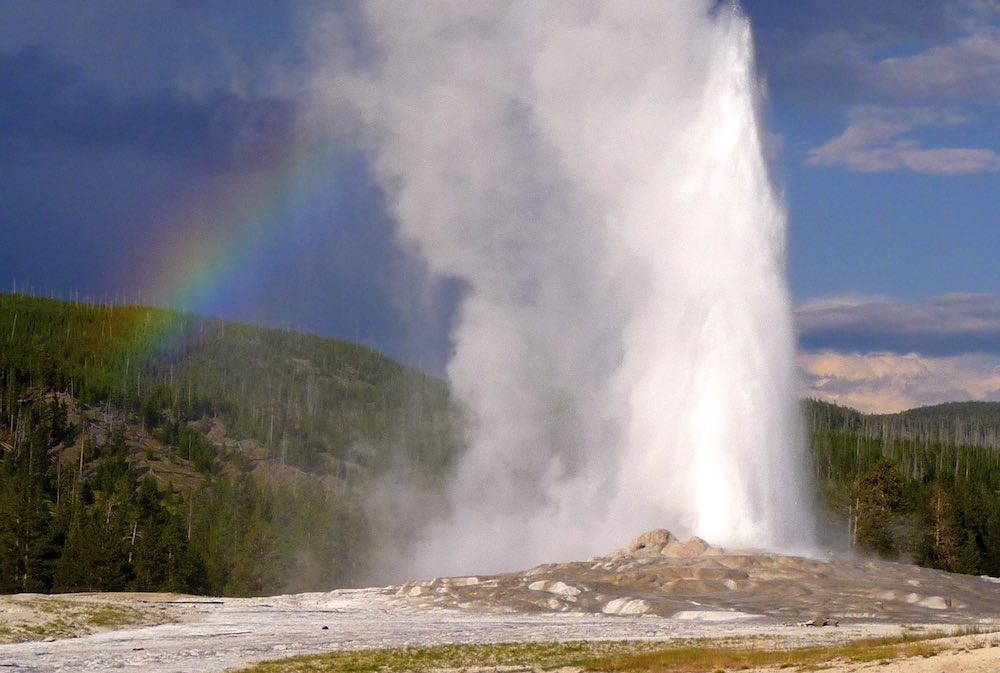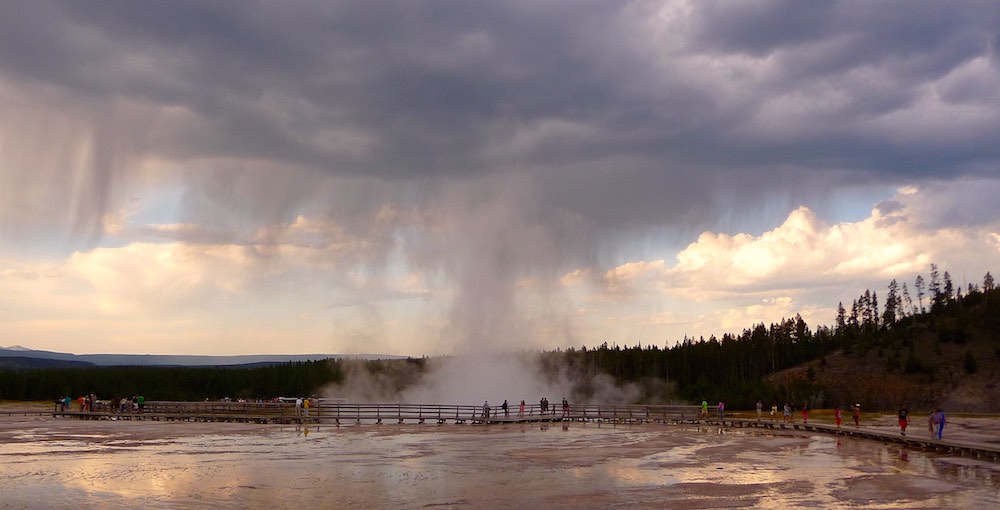Visitors to the treasured American National Park that features the geyser ‘Old Faithful’ may never see the kind of extinction-level volcanic eruptions that were depicted in the disaster film 2012.
A recent geological analysis conducted surrounding the super-volcano’s past eruptions demonstrate a slowing down and a weakening of the volcanic force that draws millions of tourists to Yellowstone National Park every year.
The analysis was described as “exhaustive,” by Dr. Trevor Nace who holds a Ph.D. in geology and climate from Duke University, who traveled thousands of miles conducting isotope dating and collecting magnetic data and chemical sampling on the states surrounding this Yellowstone hotspot.
The data showed that the two most significant eruption events occurred around 9 million and 8.7 million years ago—a short amount of time between each other geologically-speaking. The earliest is considered one of the 5 largest volcanic eruptions in earth’s history, and “sterilized” much of Idaho, Nevada, Wyoming, Colorado, and Montana with white-hot volcanic glass before spreading to affect more than 9,000 square miles (23,000 square kilometers) of the United States.
300,000 years later, another eruption — albeit smaller, battered the midwest once again, after which the giant boiler room of the North American continent began to fall to a simmer, erupting only twice in the last 3 million years, and increasing by three-fold, the time span between regular eruption events.
RELATED: Student Treks to Yellowstone and Finds Bacteria That Eats Pollution and ‘Breathes’ Electricity
Thomas Knott, lead author of the paper described it as “a very significant decline,” in the volcano’s ability to produce volcanic events.

Learning from the past
Since Yellowstone’s events were first recorded by science, volcanologists have been keen on studying it, reasoning that it might pay to be aware ahead of time, should the giant volcano begin to stir again.
Past eruptions have been 100-times more dramatic than the 1883 eruption of Krakatoa in Indonesia, which was so loud it could be heard from 3,000 miles away.
It spewed so much ash into the atmosphere that it took years for the sky to return to normal, and everywhere on earth was treated with brilliant red and orange sunsets of such luminescence that fire departments were called to extinguish apparently-raging but non-existent fires.
RELATED: U.S. Bans New Mining Claims on Public Land Near Yellowstone Park With Bipartisan Support

With effects like these from an explosion 100-times smaller than what has been feared from a Yellowstone blast, it’s enough to make someone’s day to know that we are unlikely to see an eruption as powerful as those blasts which scientists have an opportunity to study today.
SHARE The Awe-Inspiring News on Social Media…



















